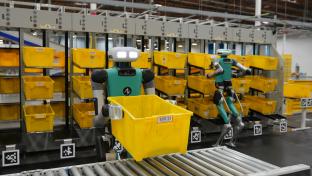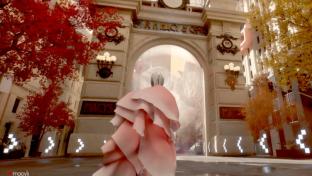Inside David’s Bridal’s First Dance With AR
Meeting today’s new consumer can take many avenues in today’s retail landscape, and for David’s Bridal, this has translated to a heavier emphasis on the use of 3D and augmented reality.
Although AR and 3D had already been on the retailer’s roadmap, 2020 can be viewed as the year of its digital explosion, Lizzy Ellingson, David’s Bridal chief digital experience officer, tells RIS. When it shut its doors last spring to slow the spread of COVID-19, it had to re-imagine a selling experience reliant heavily upon appointments, which Ellingson describes as the backbone of its business from both revenue and customer service perspectives.
The company had already slated its advancement into the emerging technologies in 2020, but the need to bridge the gap between the digital and physical retail worlds accelerated its urgency. It teamed with Vertebrae for its augmented reality tool, which enables shoppers to use their smartphones to view bridal gowns and bridesmaid’s dresses at a 360-degree angle. By doing so, customers can examine them in much greater detail before visiting a store, as well as compare them with other items in their wedding party.
The implementation, from start of conversations to launch, took just three months to execute, and David’s Bridal selected the provider because of the level of detail and intricacy its technology leverages to display the dresses.
This isn’t to say it’s easy — it takes about 12 to 16 hours to image one dress — a process that David’s Bridal has implemented for about 50 of its top-selling SKUs. Although this is just a sliver of its total inventory, the retailer is expanding it to 100 SKUs, as well as bringing the technology to other categories.
“It’s a really unique experience in terms of engagement levels,” says Ellingson, noting that the retailer is recording about a 30% lift in transactions with people who use the tool on a mobile or desktop device. It’s also seeing a more than 100% lift in creating an appointment.
“That's signaling to us that this tool is really helping drive confidence for that person to know that that could be the dress that they want to try on in-store.”
Feedback from both customers and associates has been very positive, she says. “It's just another as another selling tool. At the end of the day, if we can better equip our associates with better technology, better ways to serve their customer, that's going to only help them. It makes them not only more knowledgeable but have more [tools] at their discretion.
Looking ahead to a post-pandemic retail landscape when in-person shopping no longer faces restrictions, Ellingson sees virtual reality and 3D as continuing to play a significant role in the customer experience, especially as the technology advances.
Although the technology currently only displays the dress, the next level would be for shoppers to see how the dress can conform to different body types. David’s Bridal is currently working with Vertebrae to push the technology so customers can see how a dress looks on their midsection or chest, or whether they should try it on with veils or earrings.
Augmented reality and 3D are helping the 70-year-old retailer make quick gains in its technological progress, and it’s something that Ellingson expects to lead toward other inventions and areas of investment. The percentage of its customers that use their mobile device on David’s Bridal’s website is around 75%, a figure that is only growing over time.
“Desktop is still very much needed, but the amount of people that are coming from social channels to view dresses and shop and get inspiration is really high on the mobile device, so we're a very mobile-first company.” As a result, the company is focused on creating mobile experiences that are both intuitive and delightful.
For other retailers exploring this type of technology, Ellingson’s advice is test small in order to move fast. By identifying items with the best opportunity to sell — as well as those could stand apart for consumers to see in a different format — and then jump in quickly.
“It is a space that, like many, as it starts to format and people start to see that it's true, it's real, and it's actually a really great experience, a lot of people [will] start to jump on that.”






